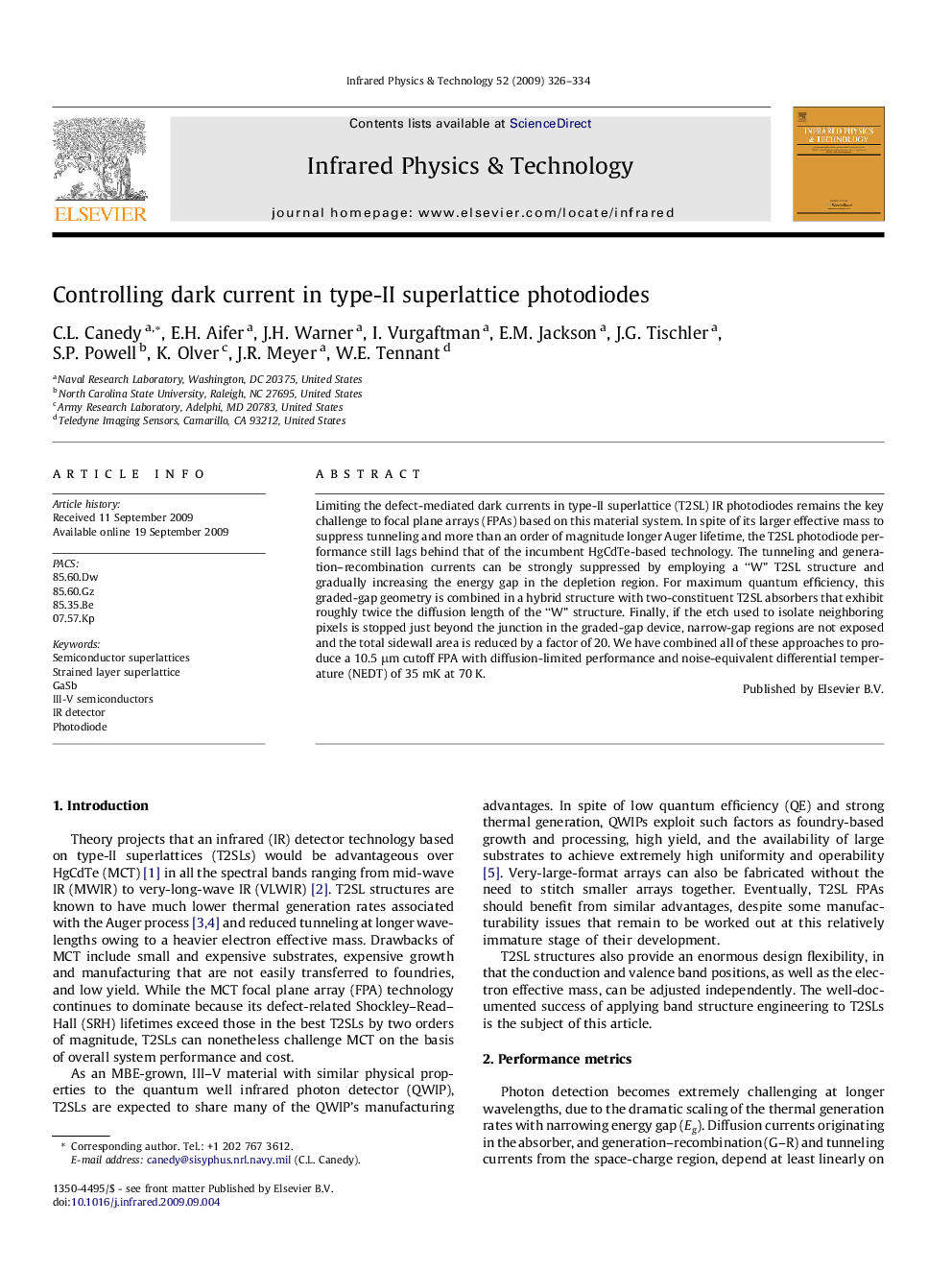| Article ID | Journal | Published Year | Pages | File Type |
|---|---|---|---|---|
| 1785019 | Infrared Physics & Technology | 2009 | 9 Pages |
Abstract
Limiting the defect-mediated dark currents in type-II superlattice (T2SL) IR photodiodes remains the key challenge to focal plane arrays (FPAs) based on this material system. In spite of its larger effective mass to suppress tunneling and more than an order of magnitude longer Auger lifetime, the T2SL photodiode performance still lags behind that of the incumbent HgCdTe-based technology. The tunneling and generation-recombination currents can be strongly suppressed by employing a “W” T2SL structure and gradually increasing the energy gap in the depletion region. For maximum quantum efficiency, this graded-gap geometry is combined in a hybrid structure with two-constituent T2SL absorbers that exhibit roughly twice the diffusion length of the “W” structure. Finally, if the etch used to isolate neighboring pixels is stopped just beyond the junction in the graded-gap device, narrow-gap regions are not exposed and the total sidewall area is reduced by a factor of 20. We have combined all of these approaches to produce a 10.5 μm cutoff FPA with diffusion-limited performance and noise-equivalent differential temperature (NEDT) of 35 mK at 70 K.
Keywords
Related Topics
Physical Sciences and Engineering
Physics and Astronomy
Atomic and Molecular Physics, and Optics
Authors
C.L. Canedy, E.H. Aifer, J.H. Warner, I. Vurgaftman, E.M. Jackson, J.G. Tischler, S.P. Powell, K. Olver, J.R. Meyer, W.E. Tennant,
